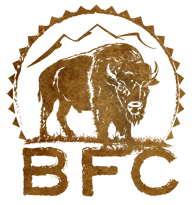-
Genetic manipulation: The purposeful alteration of an organism’s genome through selective breeding or scientific procedures to add DNA or silence gene sequences.
-
Genetic non-exchangeability: The tendency of a subspecies to remain genetically distinct from neighboring populations due to geographic isolation, sexual selection, or other factors.
-
Hazing: The forced removal of wild bison from their chosen habitat. Hazing operations taking place under the Interagency Bison Management Plan (IBMP) are directed by the Montana Department of Livestock (DOL) in the state of Montana, and by Yellowstone Park rangers within Yellowstone National Park. Hazing is an ecologically destructive activity conducted with helicopters, snowmobiles, horses, motorcycles, all-terrain vehicles, and on foot. Hazing often results in injury, death, or disturbance to bison and other wild species.
-
Hybridization: The act or process involving the mating of (or otherwise blending the genes of) organisms of different species to create a combined (“hybrid”) species.
-
Introgression: The transfer of genetic information from one species to another as a result of hybridization between them. Introgression describes the incorporation of alleles (a variant form of a gene) from one species into the gene pool of a second species.
-
Natural limiting factors: Environmental conditions that limit the growth, abundance, or distribution of an organism or a population of organisms in an ecosystem.
-
Region: Different forest service lands are managed by different offices located throughout the country. These areas are designated and operated as distinct, separate regions by the forest service.
-
Subpopulation: An identifiable fraction or subdivision of a population sharing one or more distinct characteristics.
-
Subspecies: A taxonomic category that ranks below species and is commonly indicative of geographical isolation. Organisms belonging to different subspecies are generally capable of interbreeding and producing fertile offspring, yet do not do so due to geographic isolation, sexual selection, or other factors.
For more great learning materials,
please click here to visit our Bison Research Papers page.







